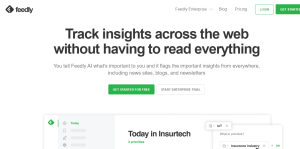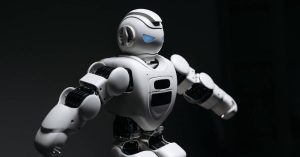The latest news on Saturday night, four astronauts aboard a NASA SpaceX Dragon capsule returned from five months aboard the International Space Station.
NASA astronauts Nicole Mann and Josh Cassada, as well as JAXA (Japan Aerospace Exploration Agency) astronaut Koichi Wakata and Russian cosmonaut Anna Kikina, made the flight back.
The crew conducted a variety of scientific experiments. They explored new methods for growing plants without soil, launched Uganda’s and Zimbabwe’s first satellites, observed how liquids move within containers under lunar gravity, and more.
Splashdown and, the four astronauts on SpaceX’s Crew-5 mission
On Saturday night, the four astronauts on SpaceX’s Crew-5 mission to the International Space Station returned home to Earth after five months in orbit. They left in the early morning of March 11, undocking their Dragon Endurance capsule and setting sail for Earth with a splashdown off Florida’s shoreline.
Acclaimed mission
Splashdown marks the conclusion of an acclaimed mission that lasted 157 days in orbit and covered 66 million statute miles (about 100 kilometers) around Earth. Mann, Cassada, and Wakata completed two SpaceX-led spacewalks spanning 14 hours, 2 minutes each – culminating in Splashdown itself!
Streak of light
Once the three astronauts had undocked, the capsule performed a series of maneuvers to put itself on course for atmospheric reentry. As it approached Earth in its final moments, a brilliant streak of light illuminated the night sky in celebration – signaling both its safe return and exciting expedition!
When astronauts return from space, they typically complete medical checks and return to their home base. Although this process is relatively straightforward, it can also be hazardous.
Mistakes in recovery operations
One of the most frequent mistakes in recovery operations involves overshooting a designated landing zone, often leading to an unexpected splashdown. This issue arises especially when the capsule comes down far from any rescue ships.
- Recently, several spaceflyers have encountered this challenge, including Gus Grissom and Scott Carpenter who almost drowned when their Liberty Bell 7 capsule’s hatch blew prematurely.
- To respond in case a spaceflyer’s craft overshoots its assigned landing zone, several vessels are on standby to provide assistance.
- For five months, NASA astronauts Nicole Mann, Josh Cassada, and Koichi Wakata along with Russian cosmonaut Anna Kikina have been working on scientific research experiments aboard the space station.
- Additionally, they dedicated much of their free time to public outreach events that aimed to motivate Indigenous children.
During their time aboard the space station, crew members spent a great deal of time discussing the future of space exploration with Indigenous youth across America.
Mann is from the Wailacki tribe of Round Valley Reservation in Oregon and her outreach activities have focused on teaching Indigenous children about their culture and traditions. Additionally, she brought along a dream catcher that she brought along on her trip to the space station for display.
Recovery
Saturday evening, NASA SpaceX’s Dragon Endurance capsule returned to Earth with four crew members aboard. Nicole Mann – the first Native American woman in space – led them as they undocked from the International Space Station and reentered Earth’s atmosphere via two sets of parachutes that reduced its speed to 15 miles per hour before splashing down in the Gulf of Mexico.
- Research into various science and technology areas
Mann, Cassada, Wakata, and Kikina spent five months aboard the station conducting research into various science and technology areas.
Their investigations included studying microgravity-induced changes to human cells that mimic those associated with aging; testing dietary improvements on immune function and gastrointestinal health; as well as cultivating plants using liquid and air-based growth materials in order to produce fresh foods onboard the station.
They helped reinstall the station’s bioprinting facility as an eventual step toward manufacturing
- The International Space Station
On Saturday morning, four crew members aboard SpaceX Dragon Endurance spacecraft left the International Space Station and plunged through the atmosphere, their heat shield enduring temperatures up to 3,500 degrees Fahrenheit.
Two sets of parachutes deployed to slow its descent before hitting the Gulf of Mexico where a SpaceX recovery ship awaits them. This vessel will assist them out of their Dragon spacecraft which will then be towed back onto dry land at Florida’s Space Coast landing site.
Return to Earth
On Saturday night (March 2), SpaceX’s Dragon Endurance touched down in the Gulf of Mexico with two NASA astronauts, a Japanese space veteran and a Russian cosmonaut returning to Earth after five months aboard the International Space Station. Commander Nicole Mann and pilot Josh Cassada led the crew from Japan alongside Koichi Wakata from Japan’s space agency Japan Aerospace Exploration Agency as co-cosmonauts.
In their time aboard the station, the four space flyers completed nearly 200 science experiments and technology tests. One experiment sought to print organs in space using a BioFabrication Facility machine on board the station.
But the Crew-5 flight was also marred by several challenges, such as an apparent micrometeoroid strike that disabled a Russian spacecraft docked on the International Space Station (ISS), necessitating the launch of a new capsule to return cosmonauts Sergey Prokopyev and Dmitri Petelin and astronaut Frank Rubio back to Earth this autumn.
Final Words
After five months on board the International Space Station (ISS), NASA astronaut Nicole Mann, JAXA astronaut Koichi Wakata and Russian cosmonaut Anna Kikina have returned home aboard the SpaceX Dragon Endurance capsule.
This mission is also a test of SpaceX’s Starship spacecraft, an entirely reusable super heavy-lift transportation system designed to enable low-cost access to space
Launched atop NASA’s next-generation Falcon 9 rocket, Starship will make its way up the Moon before making a full circle around it and safely returning to Earth. After Demo-2 concludes, NASA will review and approve Dragon for certification before its first operational crew flights in 2021.






